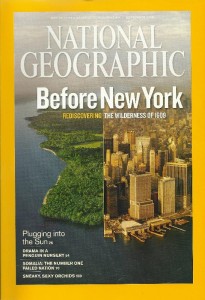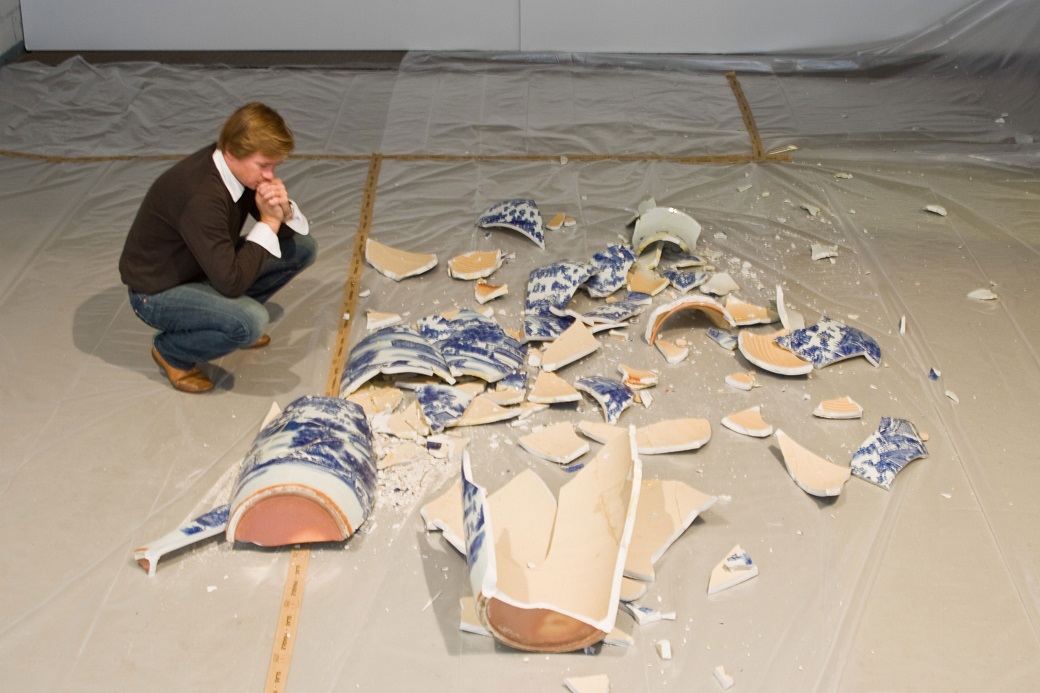Time travel is just like regular travel, except you move around the fourth dimension instead of just the other three. I will explain how. It doesn’t take any special talent but you do need to practice it. You can do it anywhere, even when you’re regular-traveling.
The first thing you should do when you get to a new city, I remember reading in a travel guide, is find the highest point where you can see the whole thing. Before any other sightseeing, you’re supposed to get yourself up to the observation deck at the CN Tower, Christ the Redeemer, Top of the Rock or the Space Needle, and look at the city from there.
The writer claimed this ritual totally transforms a visitor’s experience of a city, because everywhere you go afterwards, you know roughly where you are in the landscape. Otherwise, knowing where you are is a completely abstract exercise. You’re picturing yourself on the map instead of in the territory, navigating colored lines and rows of rectangles instead of the actual streets, hills, waterways and boroughs that make up a real-life city.
This sounded like a great idea and I planned to do it in every city on my big backpacking trip. But I forgot to actually do it until years later in New York, near the end of my trip. I went to the top of 30 Rock and saw the city for what was, I realized, the first time. I took about 500 pictures, but none of them really capture the sense that the city is a great big physical thing, a surreal carpet of buildings growing over what was once probably a very quiet natural harbor.
The view reminded me of a National Geographic cover that showed Manhattan split lengthwise, the East half the city we know today, and the west half the wild, green island it must have been five hundred (or five thousand) years ago.
It was surprisingly easy to see the landscape this way, without its modern-day clothing, and now I do it almost everywhere, especially in my own city. I look at the contours of the land beneath the infrastructure, and picture what it might have been like to stand there before anything had been built there. Almost every city sits where rivers meet, or where the coastline does something inviting. Most downtowns stand on what would be a perfect spot to pitch a tent if you time-traveled back to the city’s founding. Every city was once just a campsite.
Time-traveling for fun and insight
I’ve been exploring this kind of recreational time-travel, on different scales. If I’m sitting in a bustling public square, I might imagine its post-apocalyptic version: cracked and windswept, visited only by animals. Or maybe I’ll look at it as the unpaved clearing it was a hundred years ago, when it was just beginning its tenure as a meeting place. No cars yet, just horses. Church bells. Chimney smoke.
Or I will look at an apartment building and see it as both a brand new building and a condemned shell, or maybe the forest that stood there long before there was even a city.
The insight happens when you come back to the present and see it like it is right now. Suddenly the old building seems to retain all those faces behind its current one: that of an older building, a new building, a ruin, a busy construction site, and a virgin stand of trees. Its present-day appearance now feels like it’s one of many.
 This sensation of looking at something across time is really hard to convey, so I’ll give you a simple example you can try out. Look at the room you’re in right now, and picture it as it will be after you’ve left. If you’re in the office, picture your workstation all closed down, your chair empty, everything where you left it, nobody in the building but maintenance staff. Just by imagining this place in the near future, you can feel a real hint of the mood this space can have at different times. When you let go of the thought and come back to your present experience at work, the room somehow seems bigger—not in its physical size, but in its temporal size. You might get the sense, rightly, that there’s more to this space than how it looks and feels right now, and that that’s true for every place you go.
This sensation of looking at something across time is really hard to convey, so I’ll give you a simple example you can try out. Look at the room you’re in right now, and picture it as it will be after you’ve left. If you’re in the office, picture your workstation all closed down, your chair empty, everything where you left it, nobody in the building but maintenance staff. Just by imagining this place in the near future, you can feel a real hint of the mood this space can have at different times. When you let go of the thought and come back to your present experience at work, the room somehow seems bigger—not in its physical size, but in its temporal size. You might get the sense, rightly, that there’s more to this space than how it looks and feels right now, and that that’s true for every place you go.
We tend to view our surroundings only as far as they are relevant to ourselves and our time, but each space has so much more meaning to it than the tiny sliver each of us know. My apartment, which to me has always seemed mine, has spent most of its life housing people I don’t know, each of whom had their own familiar, personal feelings towards this space. The place where I drink my coffee, here in 2015, is also the site of untold breakups, parties, conversations, and arguments, possibly crimes, acts of betrayal or acts of redemption. People probably conceived children in here.
Time-traveling reveals this additional depth because it reminds you that there is a fourth dimension, time, in every apparently three-dimensional space. It doesn’t really matter that you can’t directly experience what a space was like in the past, or will be like in the future; actual time-travel would wreck the stock market and probably everything else. But just by recognizing that things also exist in other times, you gain some insight on how to respond to them today.
Using this power for Good
Although it’s fun—and strangely reassuring—to look at places across different times, this kind of time-travel has some more specific applications. In the classic stress-reduction book Don’t Sweat the Small Stuff Richard Carlson recommends looking at every person as both a defenseless infant and a 100-year-old senior. The extra perspective gained from contemplating a person’s often-ignored fourth dimension makes it almost impossible to view them without compassion, even if they’re currently annoying you.
Eastern sages have given us the similar advice to “see the glass as already broken.” The idea is to look at any possession with an awareness that one day it will break. When the glass does get knocked over and smashed on the floor, instead of loss you feel gratitude. Its destruction was already a given, and in a sense it was always a part of it. When you can picture a thing’s destruction while it is still intact, you get a much more acute sense of what it is doing for you now. Ideally, we would see everything as broken, because contemplating a thing’s loss makes its value clear.
Looking at loved ones in this way reveals how powerful a practice this is. Life is precious to us only because we know it can be lost, but when it’s still present we can easily overlook that preciousness. I’ve written several times about a simple time-traveling exercise that will fill you with gratitude:
When you’re with friends or close relatives, in an ordinary moment—maybe at dinner or while a group of people is talking—zoom out for a second and observe the person as if you’re only remembering them, from some time in the future when this person no longer around. Don’t worry about why they’re gone, just look at them as if they’re out of your life now, and you’re only remembering what they were like, their voice and their mannerisms.
If you can feel this person’s gone-ness for even a moment, then when you come back and remember that this isn’t a memory, and that you are actually seeing them, live, the gratitude you will feel can be staggering. It seems like a small miracle has happened: this wonderful person is still here, and you are living in that precious time when your lives are overlapping. You are just that lucky.
For anyone who’s ever felt the hole left by a lost loved one—this is the opposite feeling of that. We have a chance to feel it every day, if we can find the necessary perspective. If you have that experience even once, then you can appreciate the immense value of recreational time-travel. It creates perspective about the present we couldn’t otherwise have. Everything exists in four dimensions, but for one of those dimensions we’re stuck at one location: the present. So in a way, we only see life’s surface. But we can at least get a sense of how deep things go beneath it.


